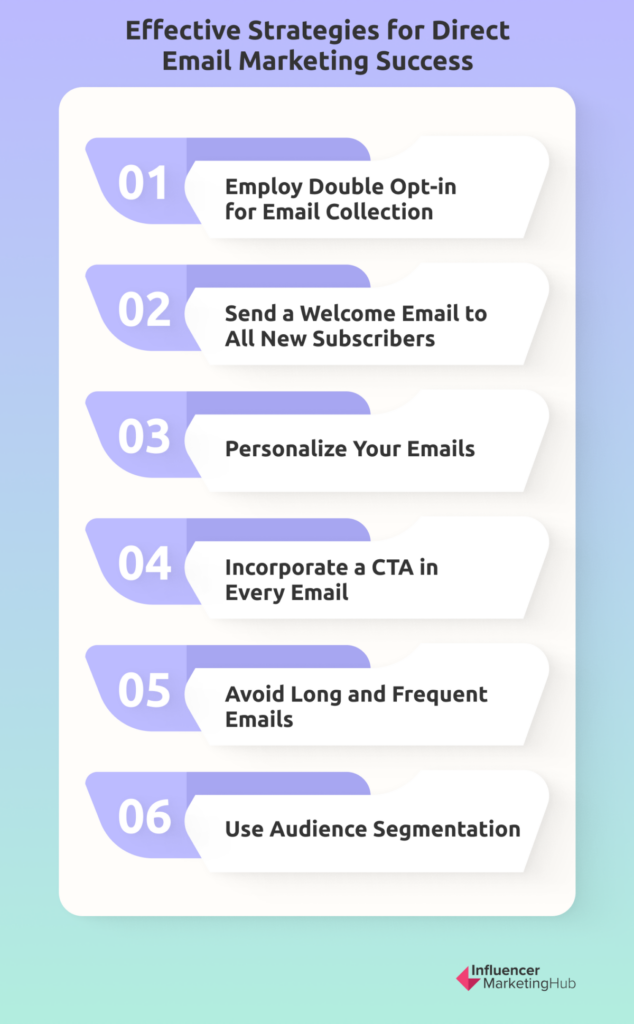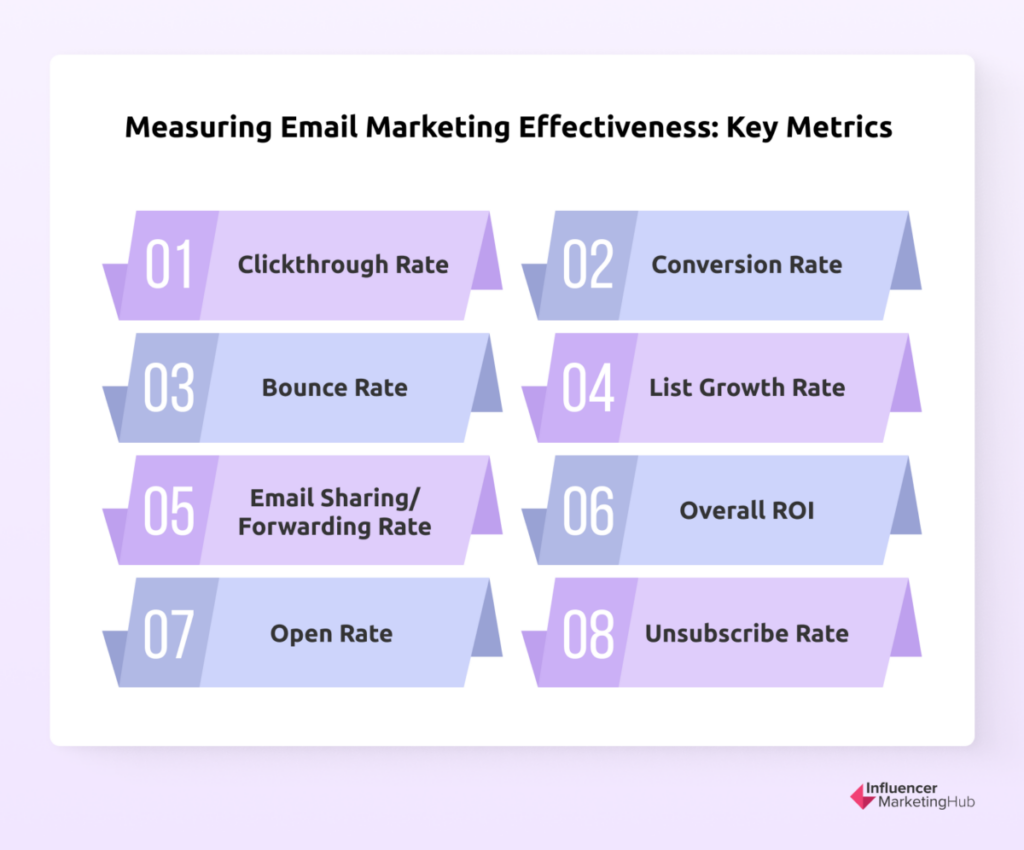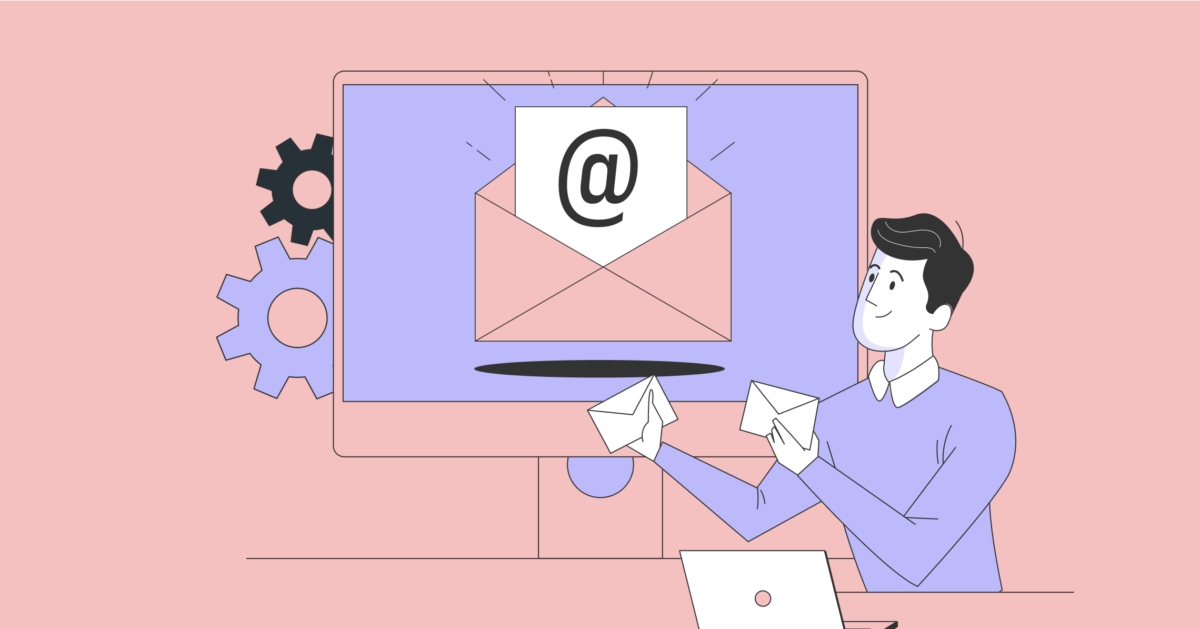We saw in our Ultimate Step-by-step Guide to Email Marketing that email marketing provides a highly cost-effective digital marketing strategy that involves sending emails to your existing customers and prospects to gain more conversions. You can connect with your leads and nurture them. And email can be highly effective. Brands have generated as much as $38 for every $1 spent.
But, as with much marketing, many firms fail with email marketing because they don’t understand how to do it properly. They see low conversion rates and negligible ROI. Or even worse, all their emails end up in their leads’ spam folders, because they don’t understand how to send emails without upsetting people and the email providers’ systems.
In this post, we look at a selection of direct email marketing strategies that ensure that you benefit from your email marketing, rather than finding yourself appearing on some ominous blacklist of spammers and potential scammers.
Best Direct Email Marketing Strategies to Improve Your Conversions:
Is Direct Email Marketing Spam?
Some businesses worry about engaging in direct email marketing in case potential customers think of it as spam. And the last thing any reputable business wants is for their name to be associated with spam.
However, spam typically involves somebody (often bots) sending unsolicited emails to a large number of accounts. The conversion rate for spam is exceptionally low, which is why spammers need to target vast numbers of email accounts (often hundreds of thousands of accounts at a time) as “victims”.
Direct email marketing, however, follows strict rules to ensure that emails are only sent to people who opt into the advertiser’s mailing list. Also, one essential direct email marketing strategy is to segment your audience. That way, emails are only sent to relevant people about topics that will interest them. Direct email marketing emails are also generally personalized, even if that just addressing the recipient by name.
Benefits and Effectiveness of Direct Email Marketing
Email marketing is one of the oldest forms of Internet marketing. Pundits and naysayers have been predicting the death of direct email marketing (and indeed email itself) for years. However, despite this negativity, email refuses to die, and remains as popular as ever. We saw in our Ultimate List of Email Marketing Statistics that 306 billion emails were sent and received every day in 2020. 46% of marketers consider email marketing an important lead-generation tactic, while 47% consider it important for lead nurturing.
Direct email marketing is particularly favored by those operating in the B2B sector, with 87% of B2B marketers in North America using emails as a primary way to nurture their leads.
One advantage of direct email marketing over many other marketing channels is that it provides excellent opportunities to personalize your marketing message. At the very least you should incorporate each recipient’s name in your message. By segmenting your emails, you can ensure that you only send messages that target relevant recipients, focusing on topics that interest them.
Laws in many jurisdictions (particularly in the EU) require that you only engage with people who opt to receive your emails. This makes it easier to personalize your emails, as you will generally have more information about somebody than just an email address. It also means you can segment your emails to ensure that you aren’t sending irrelevant emails to people. For example, if somebody’s signed into your email list in return for something on a topic of interest to them, then you know they are likely to be interested in emails relating to that topic.
Managers like direct email marketing because it provides them with clear metrics they can use to measure the success of a campaign. This compares with some of the newer types of digital marketing, where measuring success can be somewhat nebulous.
Direct email marketing can also be more affordable than other marketing types. Many of the platforms in our Email Marketing Software Reviews have cheap or even free plans if your mailing lists and email volumes are small. Remember, that much of the success in email marketing comes from targeting emails to recipients, rather than blindly sending as many emails as possible.
Best Practices for Successful Direct Email Marketing
You don’t have to be elaborate to undertake successful direct email marketing. You just need to ensure that you carry out the basics effectively. And many of these factors are simple, straightforward, and logical once you know them. In this section, we examine some of those essential practices you should follow for successful direct email marketing.
1. Use Double Opt-in to Collect Email Addresses
This is the key factor that separates direct email marketing from spam. It is also a legal requirement in many countries and territories. By using double opt-in to collect email addresses you are ensuring that people are permitting you to collect their email addresses.
You will typically create some form of lead magnet to encourage somebody to give you access to their email address. For example, in return for your email address, Authority Hacker offers you free training (note the bold red boxes).
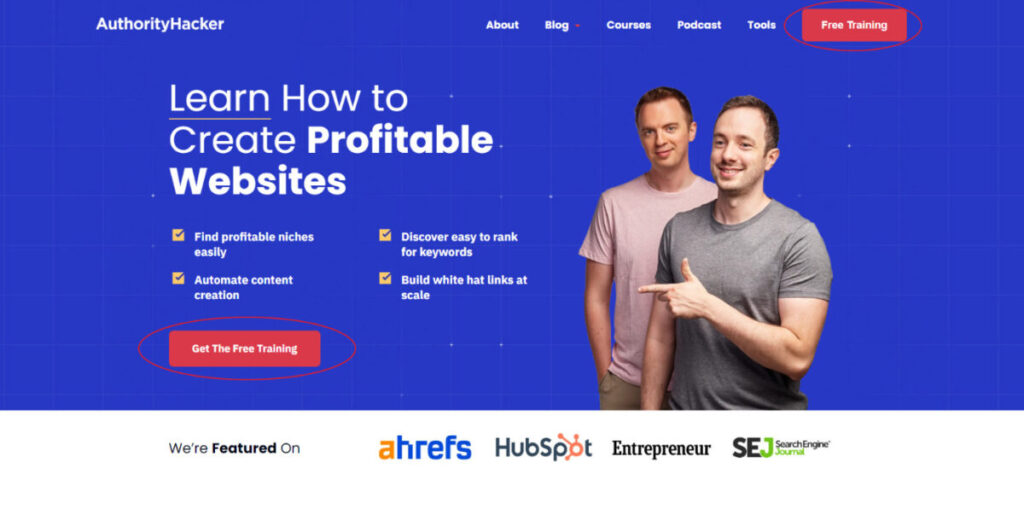
Source: authorityhacker.com
If you click on one of the red buttons, you are taken to a screen giving more details about the free training and asking you for your name and email address.
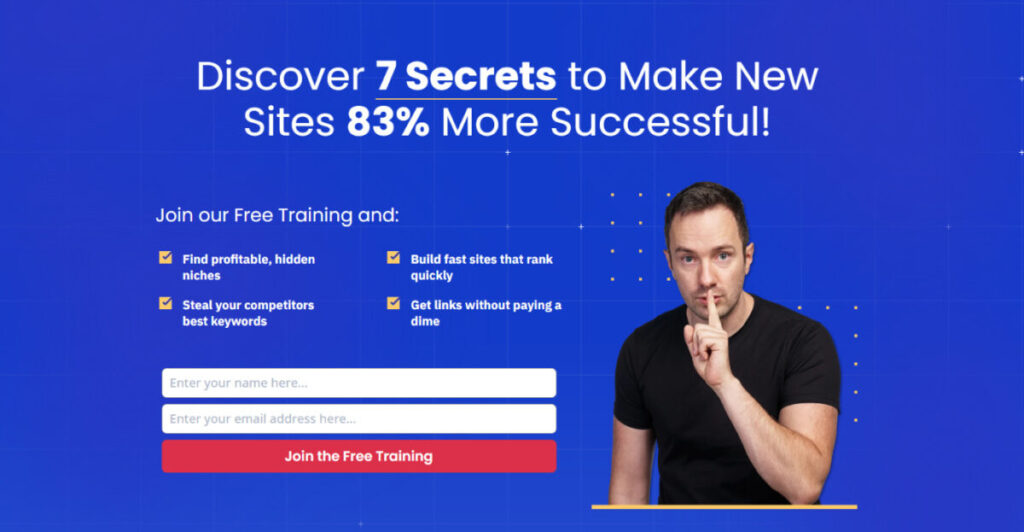
Source: authorityhacker.com
Anybody interested in receiving Authority Hacker’s free training can fill in the form. They then get an email asking them to confirm that they have given permission (i.e., the second opt-in). At this point they have made a bargain: they receive some free training lessons from Authority Hacker, and in return Authority Hacker receives permission to send them emails in the future, as part of a direct email marketing campaign.
The double opt-in method prevents false sign-ups. You can’t just use a fictional email address (or somebody else’s) if you want whatever the website offers, like Authority Hub’s free lessons.
2. Send a Welcome Email to All New Subscribers
It’s always a good idea once you have a new email address, that you send a welcome email straight away. Many email marketing platforms make this easy to set up automatically, so you don’t have to worry about doing it manually for each new subscriber. The person is obviously thinking about your business at that moment (or at least the free gift they are about to receive) and is particularly likely to open your welcome email. You can use it to introduce your business and build an emotional chord with the subscriber. If you already have a library of content online, you could create a welcome email that highlights the best content that may most interest them. You could also follow up on your giveaway with some form of promotional offer or discount.
3. Personalize Your Emails
Another way to make your emails stand out from spam is to personalize your emails. This is why it is important that you at least ask for somebody’s first name when you request their email address.
It only takes something as simple as using somebody’s first name in the introduction to your email to help forge a connection with them.
You can also set up sequences of emails that reflect where a customer sits in the purchasing funnel. For example, you could send them emails related to their browsing history in your eCommerce store or send abandoned cart emails to those who don’t finish a purchase.
4. Include at Least One Call to Action (CTA) in Every Email
The whole point of you carrying out a direct email marketing campaign is to get a response from the people to whom you’ve sent emails. Therefore, it helps to include a clear Call to Action (CTA) on which they can click. Your CTA would typically be a button or link that they can click on to do your desired action.
You will want your CTA to stand out, so you should use bold, distinctive colors. Also, keep the wording short and to the point, e.g., “Buy Now”, “Start a Trial Today”, “50% Off”, or “Sign up for Your Free …”. You will notice that each of these CTAs use actionable text.
5. Avoid Long and Frequent Emails
Most people in your email list are there, to some extent, as a “price” to pay for something. For example, they might accept your emails as the price for accepting a free eBook. Unless they are your most avid followers, or you’ve built up a reputation for creating awesome content, they’re unlikely to await your emails. Therefore, you need to ensure that you don’t lose them in a long and complex email, and worse still, have emails that exceed the size limits set by the common email account providers. Users shouldn’t have to click on a link halfway through an email just so they can finish reading it online.
Campaign Monitor believes that the ideal subject line length is between 28 to 50 characters, the ideal preheader text length is between 40 to 100 characters, the ideal email copy length is between 50 to 125 words, and the ideal CTA length is between two to five words.
Another email netiquette crime is sending too many emails. People receive hundreds of emails every day, and if your name shows up too frequently, then most people will quickly remove their permission to use their address. Databox interviewed 75 marketers to discover their mailing frequency and how it affected engagement. About 45% of their respondents send emails weekly and a third do it several times a week. Sending weekly emails seems to be the sweet spot that keeps the users engaged and provides them with regular updates without making them feel overwhelmed.
6. Use Audience Segmentation
Although it can be difficult to fully personalize your emails if you have a sizable list, you can ensure you reach the correct audiences by engaging in email segmentation. You do this by grouping your email list in various ways and sending emails to targeted groups. That way, you can avoid annoying people by sending them irrelevant emails.
You have to think carefully about the types of information for which to ask when capturing email addresses. Ask too much and people may decide not to bother to sign up for your lead target. However, the more you can find out about your subscribers the easier it is to segment your audience and target your emails.
You can segment your audience in various ways, including:
- demographics like gender, age, or location
- expressed content interests
- requested email frequency
- purchase history
- position in your purchasing funnel
- previous email engagement
You can create different email campaigns for each of your segments. These could contain different types of content, or they may be more marketing focused and you would promote different products to different segments.
Key Metrics for Measuring Direct Email Marketing Effectiveness
One advantage of email marketing being so developed is that marketers have had time to develop and standardize metrics to determine its effectiveness. In this section, we highlight some of the most important metrics that you should be able to improve by following sound direct email marketing strategies.
- Clickthrough Rate – the percentage of your email recipients who click on at least one link in an email: (Total clicks OR unique clicks ÷ Number of delivered emails) * 100
- Conversion Rate – the percentage of your email recipients who click on a link and then perform a desired action (e.g., purchase a product, or fill in a form): (Number of people who complete the desired action ÷ Number of delivered emails) * 100
- Bounce Rate – the percentage of your emails that couldn’t be successfully delivered: (Total number of bounced emails ÷ Number of delivered emails) * 100
- List Growth Rate – the rate at which your email list grows: ([Number of new subscribers - Number of unsubscribes] ÷ Total number of email addresses on your list) * 100
- Email Sharing/Forwarding Rate – the percentage of your email recipients who clicked on a “Share This” button to share your email to social media, or clicked a “Forward to a Friend” button: (Number of clicks on a share and/or forward button ÷ Number of total delivered emails) * 100
- Overall ROI – the overall return on investment of your email campaign: [Additional sales $ made minus $ invested in the campaign) ÷ $ invested in the campaign] * 100. Alternatively, in our Ultimate Guide to Email Marketing ROI, we calculated ROI as: (Gained Value - Spent Value) ÷ Spent Value. In this case, Gained Value is the amount you've earned from email marketing throughout the timeframe you're looking at and Spent Value is the amount you've invested in your email marketing campaign. This includes the costs of your email service provider as well as pay for the people involved in creating your email marketing campaigns.
- Open Rate – the percentage of recipients who open one of your emails. You should find this rate in the reports from your email service provider. It will vary from email to email so you may want to calculate an average.
- Unsubscribe Rate – the percentage of people who ask to be unsubscribed from your email list after getting an email. Again, you should find this rate in the reports from your email service provider.
Utilizing Email Marketing Tools and Services
One of the best strategies to use when participating in direct email marketing is to invest in a good email marketing tool or service. You can’t simply use your everyday email provider when sending bulk emails. We have reviewed a selection of email marketing software, and in addition, you will regularly find new products introduced to assist businesses streamline their email marketing. Some examples that have particularly caught our attention include Campaigner, Brevo, SMTP, Omnisend, and EmailOctopus.
Wrapping Things Up
Although the people on your email list will have (hopefully) permitted you to use their email addresses, it’s important to remember that most will have done so through sufferance. They will have provided their email address in return for something, perhaps access to an eBook, course, or video, and they acknowledge that the real “price” is making their email address available to you for your direct email marketing.
It's important to remember this. If you start to annoy your audience, they will revoke their permission and most email marketing tools and platforms will automatically remove them from your mailing list.
Therefore, the most important direct email marketing strategy is to avoid annoying your audience. Remember, you aren’t trying to spam them. You are trying to provide them with value, to encourage them to follow your CTA and convert, according to whatever goals you set for your campaign.
